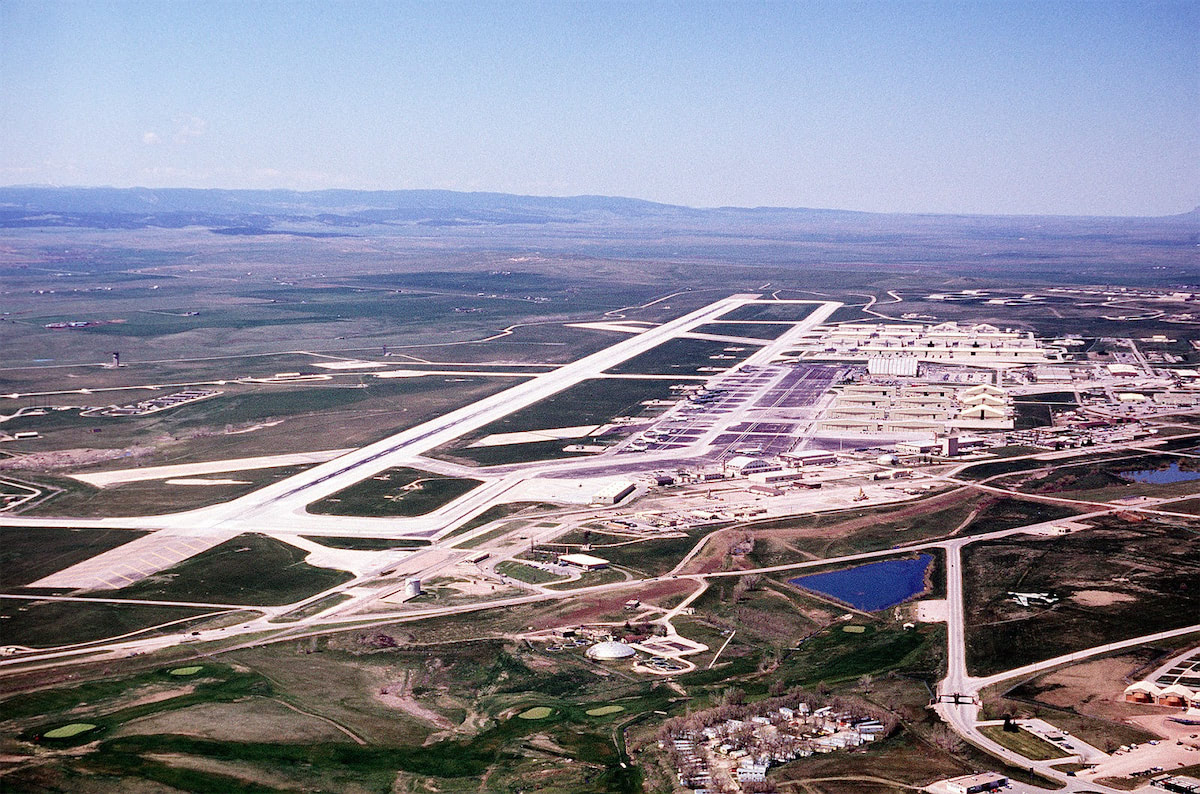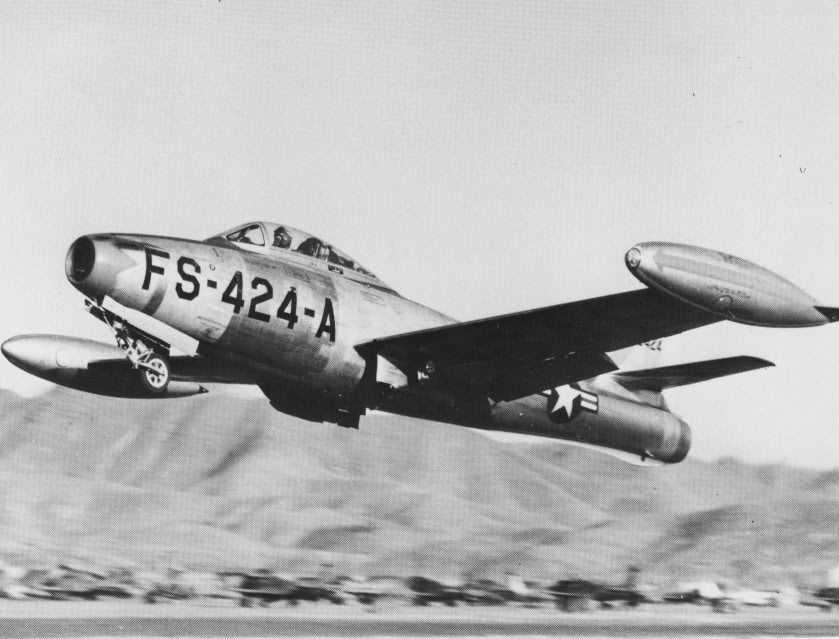
The Ellsworth UAP sightings involved a series of radar/visual observations of unidentified flying objects that occurred between August 5th and 6th, 1953. Initially seen over Bismarck, North Dakota, witnesses to these aerial objects included both civilian and military observers. The incident was described by Edward J. Ruppelt, first director of Project Blue Book, the U.S. Air Force’s investigation into unidentified flying objects between 1953 and 1969, as being “the best UFO report in the Air Force files.”¹
Background
On the evening of 5 August 1953, several military and civilian witnesses reportedly observed what was described as “an unusual red object” seen moving over Rapid City, South Dakota. The object was reportedly seen to perform several erratic movements during the period that it was observed.²
An initial call was received by the Air Defense Command radar station at Ellsworth Air Force Base from the local area Ground Observer Corps filter center shortly after dark, which detailed a sighting of the object from an observer near Black Hawk, South Dakota. According to the account, a woman approximately 10 miles west of the base had described seeing “an extremely bright light low on the horizon” visible to the northeast.³

The object, according to one initial witness report, “would remain stationary, then hop up several degrees very quickly – almost instantaneously – stop, move to the left and then swerve down in sort of a slanting motion,” thereafter repeating this sequence of movements. Personnel at the Ground Observer Corps filter center reportedly became very excited as observations of the UAP continued, “because they had the feeling that somebody was watching them.”⁴
Radar Detection
Radar operators at Ellsworth had been engaged in a training operation involving an F-84 Thunderjet turbojet fighter flying west of the base at that time the base received the call. Adjusting their sector scan to the relevant quadrant, they reportedly found a target at the precise location the witness had reported observing the bright hovering object.
The object was observed for several minutes on radar by the warrant officer serving as the duty controller on the night in question, which he said appeared to be moving slowly at an altitude of approximately 16,000 feet. The duty officer asked to be connected with the woman at Black Hawk who reported the object, and while observing it simultaneously from their respective positions, the woman suddenly exclaimed that the object had begun to move, and that she was watching it “moving southwest toward Rapid [City].”
As the duty controller watched the target moving on his scope toward the southwest, nearby base personnel were ordered to go outside and attempt to obtain a visual on the object. The observers soon reported back that they had spotted “a large bluish-white light” moving in the direction of Rapid City, following a wide circular path over the city before returning to its initial position when first detected on radar. One of the observers, a master sergeant who had served previously in Europe and Korea, later conveyed to Edward Ruppelt of these events that he had “never been so completely awed by anything,” and that when asked what he thought should be done, had reportedly “just stood there,” telling Ruppelt, “[W]hat in hell could we do – they’re bigger than all of us.”⁵
First Intercept Attempt
Following the primary observations of the UAP over Rapid City, the warrant officer contacted the F-84 Thunderjet pilot, who was still on combat air patrol to the west of Ellsworth Air Force Base, advising him that he would be vectored toward the object in an attempted intercept. First being directed to the south, the fighter pilot was then placed on a course aimed to take him directly toward the unidentified aircraft. Soon after the course correction occurred, the pilot communicated back to base that he could now see the light ahead in the distance.

Closing to within just three miles of the object, the UAP suddenly began to move away from the F-84, which the pilot, as well as the radar operator and visual observers back at Ellsworth Air Force Base, all observed simultaneously. Still at 16,000 feet, the UAP began to ascend and accelerate as it veered to the north with the F-84 in pursuit. As the pilot pursued the object, he communicated back to Ellsworth that the object appeared to suddenly brighten at intervals. Each time he would close to within approximately three miles, the craft would “automatically pick up speed and pull away,” as if the source of propulsion that moved the object were directly linked to a form of radar warning system aboard the UAP.
The F-84 pilot continued to pursue the object for 120 miles on its northbound course away from Ellsworth, with it continually outpacing the fighter jet. Finally, running low on fuel, the pilot was forced to return to base, and later conveyed to Edward Ruppelt that he had been “damn glad that he was running out of fuel because being out over some mighty desolate country alone with a UFO can cause some worry.”⁶
Second Intercept and UAP Departure
As the F-84 pilot returned to base, it was on near approach when the UAP appeared on radar again, located some 10 to 15 miles behind the jet fighter. As the initial fighter was preparing to land, a call came from the jet interceptor squadron on the base, where alert pilots had overheard the radio communication between the original F-84 pilot and the radar operator. One of the alert pilots, a veteran of both the Second World War and the Korean War, advised the controller that he wanted to attempt to pursue the object in a second attempt at interception, having reportedly said he wanted “to see a flying saucer.”
Within minutes, a second F-84 was taking off in pursuit of the object, with the pilot quickly obtaining a visual of the UAP and closing toward it. The object began to ascend and moved in a northeasterly direction. As the pilot attempted to climb to the object’s altitude, it maneuvered below him, and resumed its characteristic accelerations each time the pilot approached within three miles of the craft.
While pursuing the UAP, the second pilot attempted to discern whether the light could be a reflection caused by lights from his own aircraft, or possibly a celestial object. However, the object indeed appeared to be an airborne light, the source of which remained indiscernible from the pilot’s vantage. The pilot was also successful in detecting the object on his radar.
When later interviewed by Ruppelt, the pilot said that after pursuing the UAP for a period, he became frightened and requested that the controller allow him to abort the intercept. This time, the object did not follow the second pilot back to base and was last observed departing in the direction of Fargo, North Dakota.⁷
Project Blue Book Investigation
Due to the occurrence of combined air-visual, ground-visual, air radar, and ground radar observations, the Ellsworth incident received significant attention from Project Blue Book. Shortly after the main events of the night of August 5-6, 1953, Ruppelt was sent to the base to interrogate the witnesses.
According to Ruppelt’s follow-up report, an attempt was made by the radar controller to photograph the radar display while the UAP was visible on the scope. “Photos of this track were taken,” the Blue Book Report states, “but the camera malfunctioned and the photos were no good.”
An interview with the second F-84 pilot also revealed that a warning indicator had appeared on his radar gun sight as he began to pursue the UAP, which remained on until the chase concluded. While the intercept attempt was underway, the radar’s sight appeared to indicate an object somewhere beyond a distance of 4,000 yards. According to the pilot, the light “blinked on and off several times” as he returned to base, which might have indicated a malfunction of the radar system. However, the device was not checked by maintenance teams at Ellsworth following the incident to determine if this had been the case.

Ruppelt also learned that after the primary object had been observed continuing off scope following the second intercept attempt, the inbound F-84 pilot spotted another light while flying approximately 20 miles from base, which could not be located on radar. Initially, the pilot “thought it was a car going around curves in the hills,” but ruled this out when the object began to display red and white lights of equal intensity. A possible match for the object was thereafter located using height finder equipment, indicating a target at 8000 feet in the same direction the pilot observed the lights.
Ruppelt declined to interview observers who reported seeing the object at Black Hawk, who after already speaking with base personnel were believed to be in an excited state. Subsequent sighting reports from Bismarck filter center to the northeast were also discounted by Ruppelt, who noted that the call-ahead from Ellsworth warning them to be on the lookout for flying saucers had been “a perfect set up to see every star move around.” Balloon launches coinciding with the sightings were probed as a possible source, which resulted in the discovery of a pair of lost upper air research balloons that could have conceivably been in the area at the time.
Ruppelt said the radar controller had “left the impression he was trying to prove the existence of an unidentified flying object,” noting that the lack of photos depicting the object on the radar scope had been “unfortunate,” although adding that “he saw targets on the scope, there is no doubt about it, but whether they acted exactly as he stated is unknown.” Ruppelt’s general conclusion was that the incident, pending further study, remained unexplained.⁸
Aftermath, and Conclusions
A/1C Max G. Futch, ATIAE-5, later stated in an official Project Blue Book memorandum that the Ellsworth UAP incident had been “one of the best reports ever received on this project.”⁹

Astronomer J. Allen Hynek, advisor to Project Blue Book at the time of the incident, initially held the view that “Solid objects are certainly indicated by the evidence,” emphasizing the potential importance of resolving the case in a letter to Captain Charles A. Hardin dated November 23, 1953, where Hynek stated that “failure to identify [the object] pinpoints a possible real weakness in our defense set-up.” However, upon further investigation, Hynek began to grow skeptical of the incident, later noting in a January 19, 1954 memo that he had “now totally discounted the entire incident as an unfortunate series of seemingly coincident circumstances.”¹⁰
In contrast to Hynek’s views, in his 1956 book The Report on Unidentified Flying Objects, Ruppelt appeared to remain perplexed by the Ellsworth case, writing that “The sighting was thoroughly investigated, and I could devote pages of detail on how we looked into every facet of the incident; but it will suffice to say that in every facet we looked into we saw nothing. Nothing but a big question mark asking what was it.”¹¹
While opinions about the case varied, no official explanation was ever offered for the incident by the U.S. Air Force. Ultimately, Ruppelt’s conclusion in his report to Project Blue Book had been that the Ellsworth UAP incident remained one of its most perplexing unsolved cases.